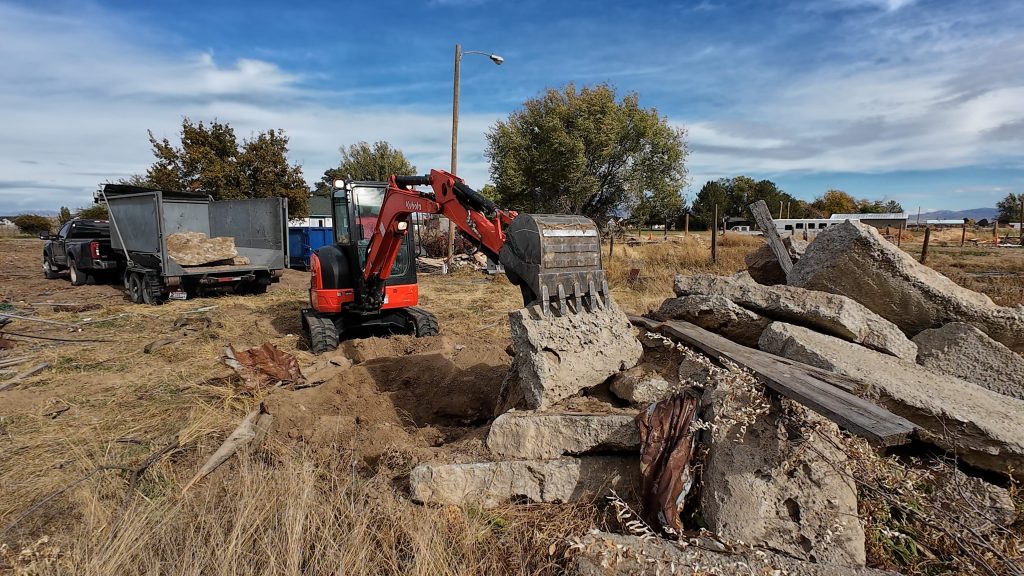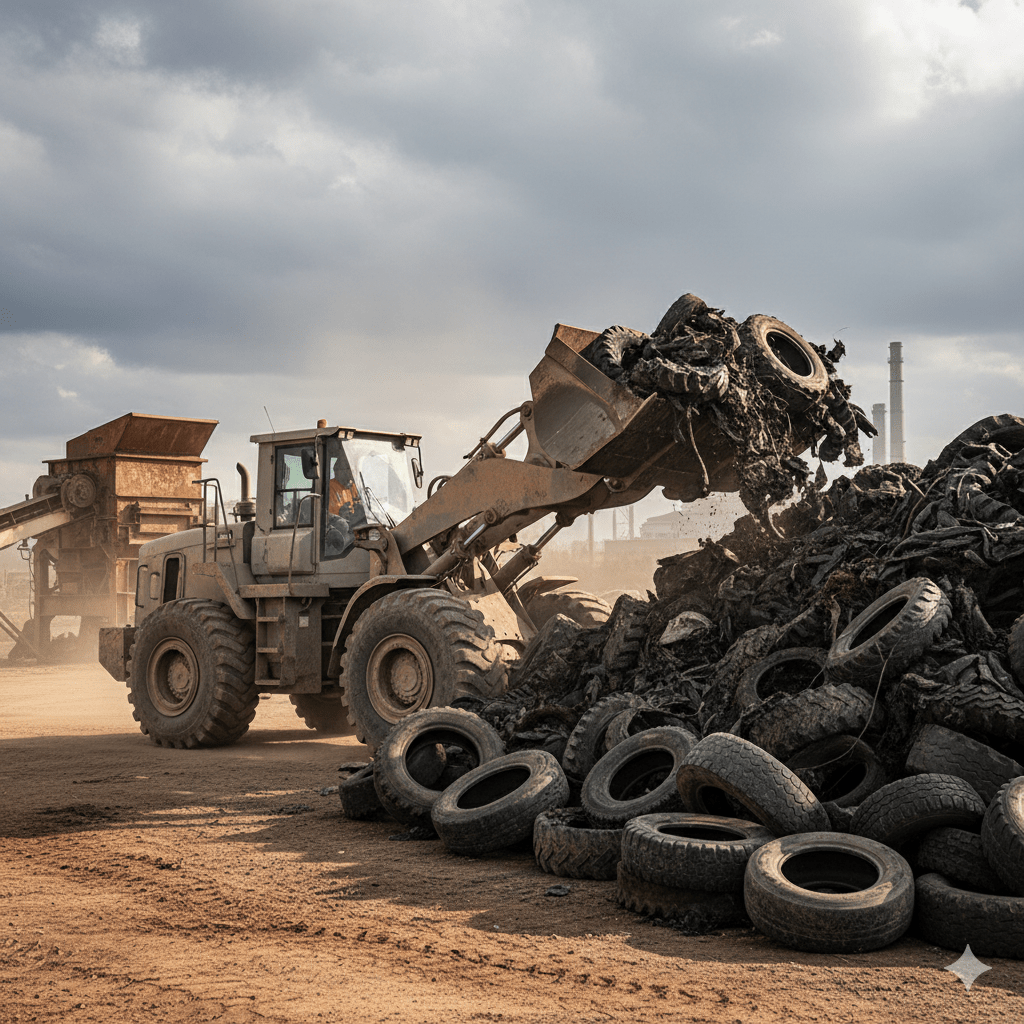Concrete looks innocent until you try to evict it—then it behaves like a mini planet with its own gravity while your lower back files a protest. The bill to break, lift, and haul that planet isn’t guesswork; it rides on five levers: mass, metal, access, rules, and time. The best concrete removal services don’t gamble with those levers—they measure thickness, find the steel, engineer the access, handle permits and disposal, and schedule around reality so your costs stay sane. Want a clean pad and a clean invoice? Master the levers—or hire the pros who already have.
Square Footage and Thickness of Concrete
Money follows mass. Bigger slab, thicker slab—bigger bill. No mystery here.
- Square footage sets the base: Contractors see 200 sq ft and immediately picture crew-hours, dumpster space, and machine cycles. Double the area, and you don’t just double labor—you fatten hauling, staging, and cleanup.
- Thickness multiplies pain:
- 3–4 inches (walkways, light patios): breakers pop it in manageable chunks.
- 5–6 inches (driveways): heavier breaker, more fuel, more time.
- 8+ inches (garage pads, hotspots, mystery pours): welcome to “why did someone build a bunker here?”
- Edge conditions matter: A slab floating on compacted gravel breaks cleaner than one welded into clay. Soft subgrade eats time because every big chunk wants to sink back into the earth like a guilty secret.
Rule you can actually use: Cost scales with (area × thickness). If you want an honest quote, measure both, don’t guess. “About four inches” is the fastest way to buy yourself a surprise line item.
Type of Reinforcement in the Concrete
Concrete alone is a wallflower. Add steel and it becomes a stage-5 clinger. Cutting steel is where schedules slip and invoices grow muscles.
- No reinforcement: dream scenario. Score, break, lift, haul. Everyone smiles.
- Wire mesh: common in patios/driveways. It tangles. Chunks won’t separate. Expect saw cutting, bolt cutters, or torch work. Adds time per square.
- Rebar: real resistance. #3–#5 bars demand saws, torches, or hydraulic cutters, plus more staging to keep sparks, dust, and humans in the right places. If bars are tight and deep, your crew is now a steel shop.
- Fiber-reinforced concrete: deceptively annoying. Looks plain, fights like Velcro. Breaks into hairy chunks that cling. Slower to clean up, heavier per load because small pieces pack tighter.
- Embedded surprises: conduit, footing dowels, leftover fence posts—each one a tiny villain. Discovery mid-demo triggers change orders because you just crossed from “slab” into “archaeology.”
If your slab has visible cracks with rust stains, assume steel. Price accordingly. Hope is not a cutting tool.

Accessibility of the Removal Site
Distance to the truck. Room to swing a breaker. Whether a mini-excavator can roll in without landscaping crying for therapy. Access is cost.
- Machine access = money saved: A skid steer that can scoop directly into a dump trailer turns hours into minutes. No access? Everything becomes hand-carried penance.
- Gate width & terrain: 36″ gate vs. 60″ gate is the difference between “mini fits” and “wheelbarrow conga line.” Slopes, steps, soft lawns, and tight turns add labor and protection materials (plywood, mats).
- Load-out path: Every extra 20–30 feet of hauling repeats hundreds of times. A path through pea gravel, river rock, or muddy beds multiplies the misery.
- Overhead and neighbors: Low eaves, trees, power lines, shared driveways—each constraint forces smaller equipment, slower movements, more spotters, more time.
Good access can beat bad thickness. Bad access can ruin good everything.
Local Disposal and Permit Costs
You don’t just break concrete. You pay to make it disappear—legally.
- Disposal math: Some regions price by ton, others by cubic yard. Concrete is heavy—~4,000–5,000 lbs per cubic yard depending on moisture and embedded material. Two “little” loads weigh like a small car.
- Recycling vs. landfill: Clean concrete (no dirt, rebar minimal, no trash) can go to a crusher for less than landfill fees. Mixed loads cost more. If the crew has to sort on-site to qualify as “clean,” you’re paying for that time or an extra container.
- Special handling: Painted concrete with lead, tile thinset, or rebar-heavy chunks may steer the load to pricier facilities. Ask what your local yards accept and how they define “clean.”
- Permits: Some cities require demo permits or right-of-way permits for staging dumpsters or parking heavy equipment. Fees vary; inspections can add days. No permit when one is required = fines or work stoppage. Neither is cheap.
Smart move: ask for dump/scale tickets with the invoice. You’ll know what moved and what it weighed.
Urgency and Timing of the Project
Schedule is a lever. Pull it gently if you like your budget.
- Rush premiums: Need it gone this week? You’re jumping the queue. Crews reshuffle, overtime kicks in, disposal timing gets awkward. You pay for that convenience.
- Seasonality: Busy seasons (dry months) compress availability. Prices float up. Off-season can save money but watch weather: rain turns sites into soup, and wet concrete weighs more, literally inflating your tip fees.
- Facility hours: Recycling yards close early. Miss the window and a second day gets added for one last load. Communication prevents the “we’ll finish tomorrow” surprise.
- Coordination with follow-on work: If you’ve got a paver crew or foundation pour scheduled, delays cascade. A contractor who buffers weather and dump hours into the timeline is protecting your wallet as much as your calendar.
Fast, cheap, perfect—choose two. And if you choose “fast,” bring snacks for “cheap,” because it’s not coming.
Bottom line
Concrete removal isn’t mysterious math. It’s mass × metal × access × rules × time. You can’t shrink your slab, but you can control the unknowns: measure thickness, identify reinforcement, clear access, confirm disposal, and set a sane schedule. Do that, and your demo stops being a wrestling match with a gray planet and becomes exactly what you wanted in the first place: gone.






